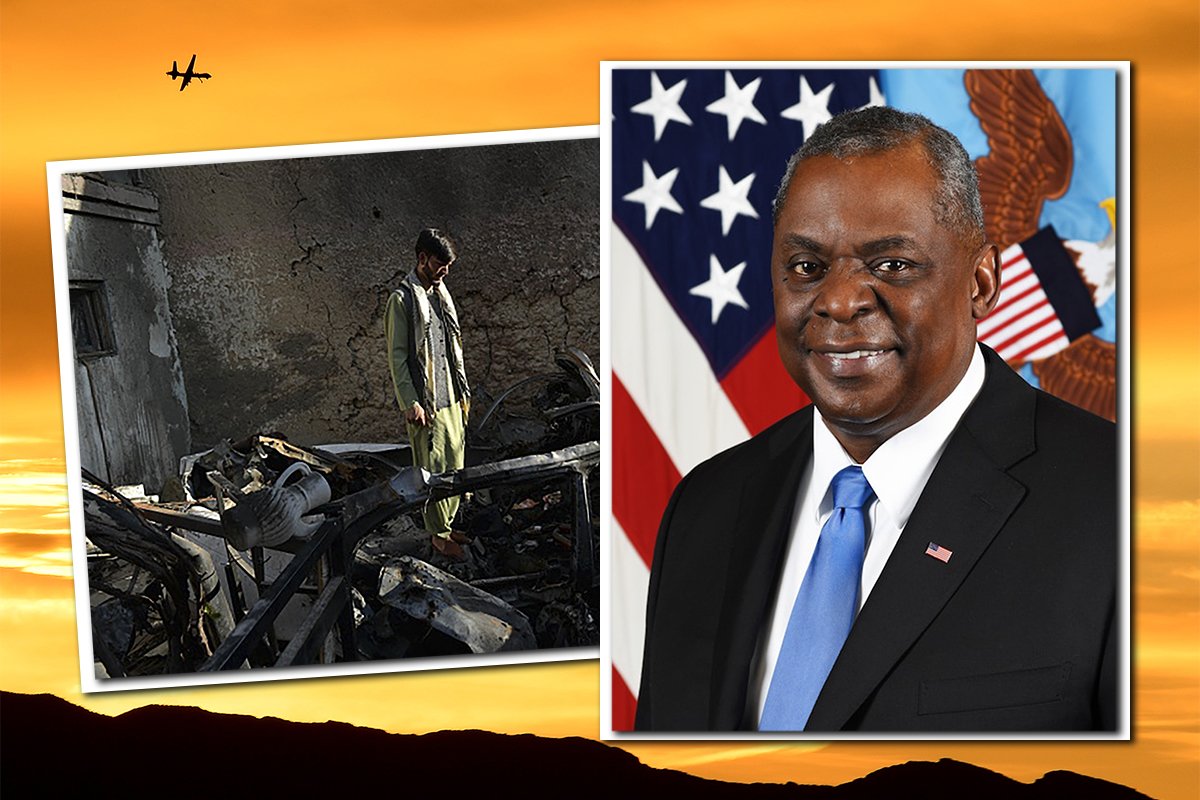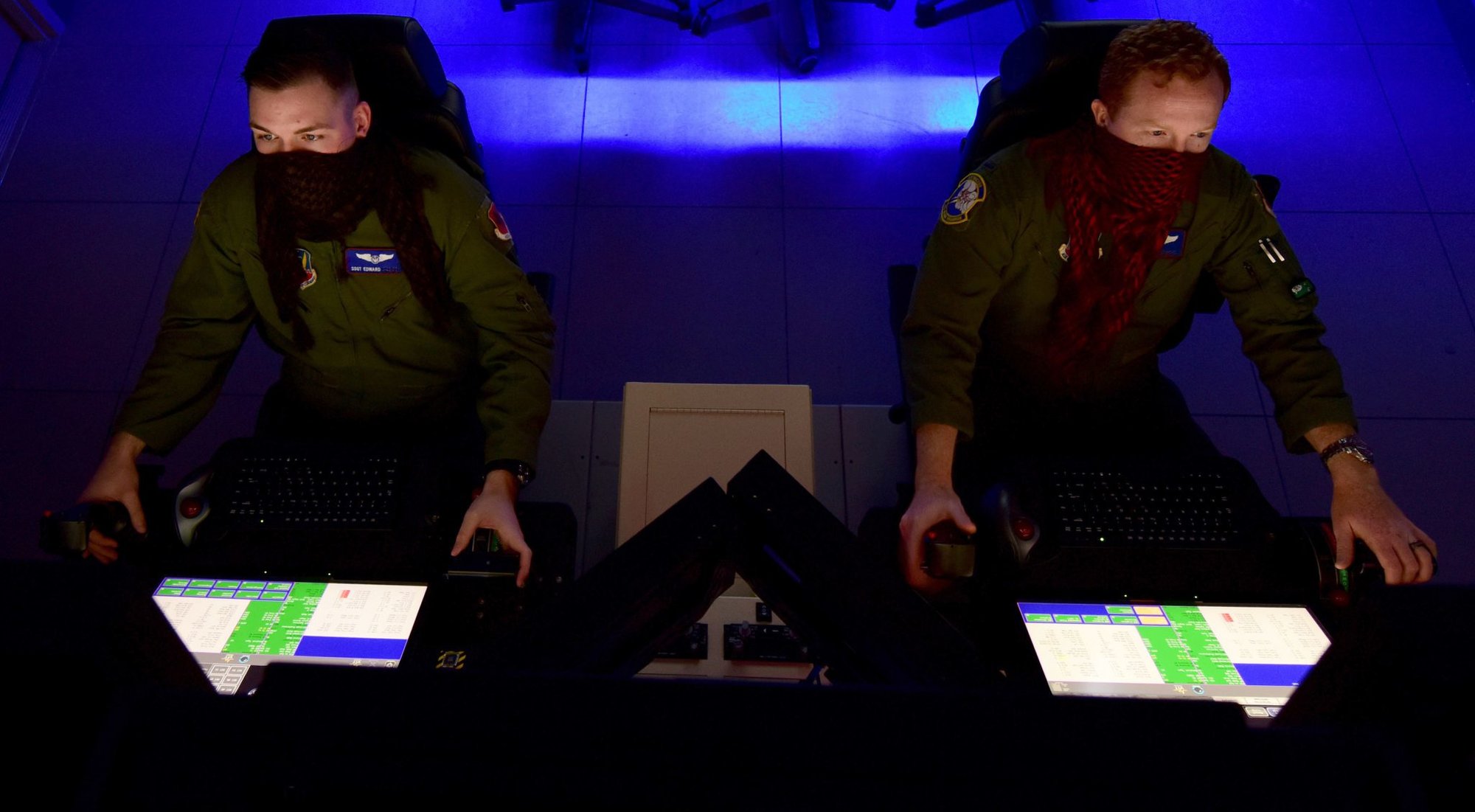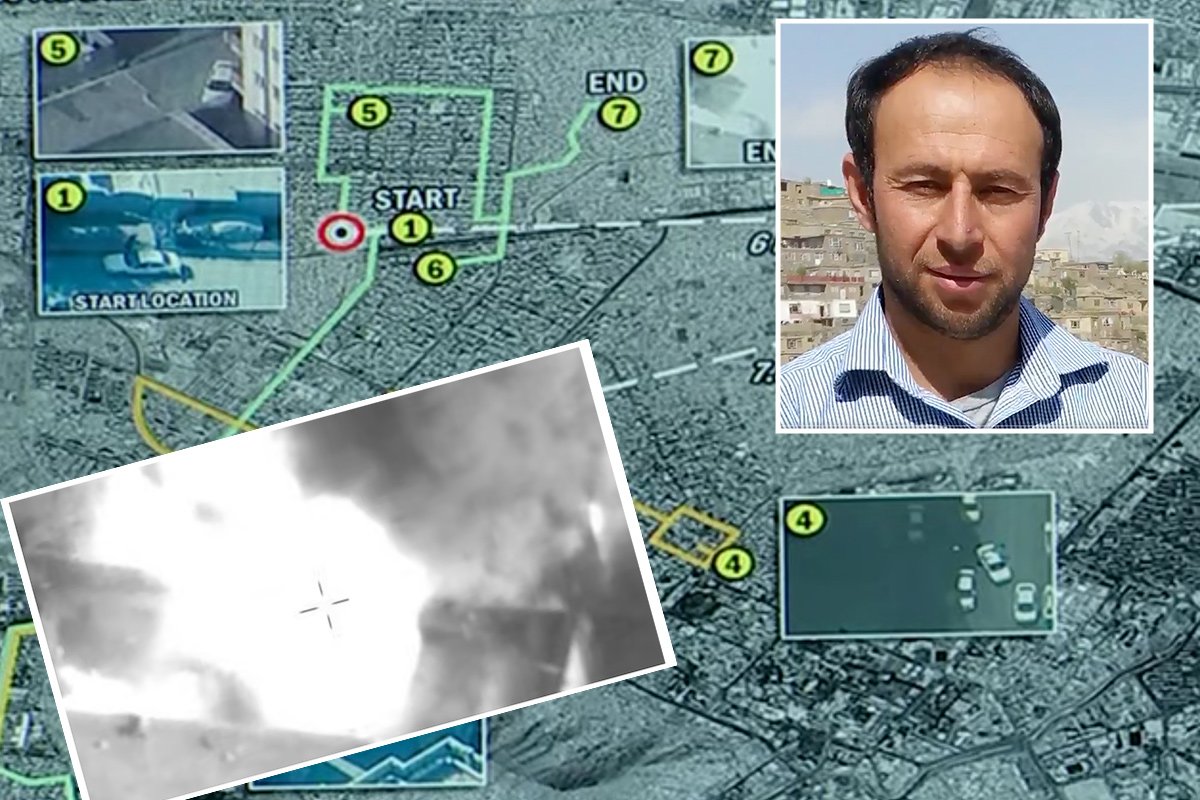Military Ordered To Overhaul How It Prevents, Tracks Civilian Deaths

The Department of Defense must develop a plan to track and reduce civilian deaths during military operations, according to a directive issued Thursday by Defense Secretary Lloyd Austin. Ten civilians were killed Aug. 29, 2021, in Kabul in a botched drone strike. Photos courtesy of Getty and Department of Defense. Composite by Coffee or Die Magazine.
Word emerged Thursday, Jan. 27, that the Pentagon will overhaul how it tracks and avoids civilian deaths in combat, just as a major study announced US war planners are “not adequately organized, structured, or resourced” to tackle the problem of US forces harming noncombatants.
The move comes on the heels of intense scrutiny and public backlash over high-profile airstrikes, such as the botched drone strike that killed 10 Afghan civilians, most of them children, on Aug. 29, 2021, in Kabul.
Defense Secretary Lloyd Austin on Thursday instructed the Department of Defense to develop a plan to track and reduce civilian deaths during military operations.
“The protection of civilians is fundamentally consistent with the effective, efficient, and decisive use of force in pursuit of U.S. national interests, and our efforts to mitigate and respond to civilian harm are a direct reflection of U.S. values,” Austin wrote in a two-page memo to top civilian and military leaders. “It is a strategic and a moral imperative.”

The new directive came the same day the Rand Corp. released its congressionally mandated report on the US military’s civilian casualty policies and procedures. The nonpartisan think tank determined the military did not use lessons learned from past mistakes during 20 years of war that could have reduced civilian casualties.
“Even the individuals involved in an incident often never saw the results of the investigation, so they could not learn lessons from what happened,” researchers wrote.
Both the DOD’s internal and external reporting on civilian casualties is often unreliable or incomplete, according to the report. Senior researcher Michael McNerney put it more bluntly, according to The Hill, calling the Pentagon’s data management “a hot mess” with information scattered on various drives and no central system allowing for analysis.
Austin expects the DOD to tackle that problem. In Thursday’s memo, he asked for the creation of a Civilian Harm Mitigation and Response Action Plan (CHMRAP) within 90 days. As part of the CHMRAP, Austin expects the DOD to develop better civilian-harm operational reporting and data management processes.
“The end of our military mission in Afghanistan and our transition in Iraq to an advisory capacity … offer us new opportunities to improve our ability to mitigate and respond to civilian harm,” Austin wrote in his memo.

The Kabul drone strike that came at the close of the US withdrawal from Afghanistan highlights the risk to civilians. After a suicide bombing killed 13 US troops, the military believed another attack was imminent and mistakenly killed an aid worker and his family. Following the strike, American officials initially insisted the target had been another ISIS-K suicide bomber, with Chairman of the Joint Chiefs of Staff Gen. Mark A. Milley going so far as to refer to the strike as “righteous.” But after media investigations, top US officials reversed course in September and admitted the targeting decisions behind the strike had been flawed.
Pentagon estimates of civilians killed in US military operations have often been far lower than reliable outside estimates, the Rand report found. For example, the DOD reported just 21 civilian deaths in Syria in 2019, but third-party estimates ranged from 490 to 1,118 deaths. Likewise in Afghanistan, the DOD reported 108 civilian deaths in 2019 while outside groups reported 559 deaths.
Rand researchers also found the DOD’s responses to civilian casualties “have historically been inconsistent and confusing” and recommended the DOD be more transparent and avoid “overly restrictive limits” on where, why, and to whom the military distributes condolence payments.
Payments in the wake of noncombatant casualties, sometimes referred to as ex gratia payments, were another area where Austin’s memo appears to concur with the Rand report. Austin directed the DOD to review how it responds to civilian casualties — including condolence payouts and public acknowledgement — and incorporate guidance for addressing civilian harm into doctrine and operational plans.
Read Next:

Hannah Ray Lambert is a former staff writer for Coffee or Die who previously covered everything from murder trials to high school trap shooting teams. She spent several months getting tear gassed during the 2020-2021 civil unrest in Portland, Oregon. When she’s not working, Hannah enjoys hiking, reading, and talking about authors and books on her podcast Between Lewis and Lovecraft.
BRCC and Bad Moon Print Press team up for an exclusive, limited-edition T-shirt design!
BRCC partners with Team Room Design for an exclusive T-shirt release!
Thirty Seconds Out has partnered with BRCC for an exclusive shirt design invoking the God of Winter.
Lucas O'Hara of Grizzly Forge has teamed up with BRCC for a badass, exclusive Shirt Club T-shirt design featuring his most popular knife and tiomahawk.
Coffee or Die sits down with one of the graphic designers behind Black Rifle Coffee's signature look and vibe.
Biden will award the Medal of Honor to a Vietnam War Army helicopter pilot who risked his life to save a reconnaissance team from almost certain death.
Ever wonder how much Jack Mandaville would f*ck sh*t up if he went back in time? The American Revolution didn't even see him coming.
A nearly 200-year-old West Point time capsule that at first appeared to yield little more than dust contains hidden treasure, the US Military Academy said.












